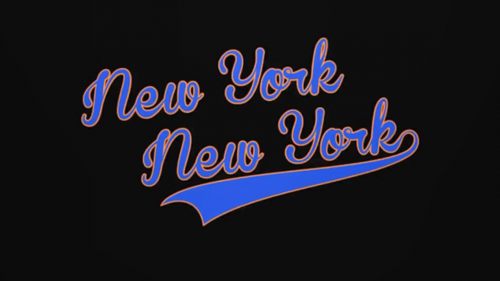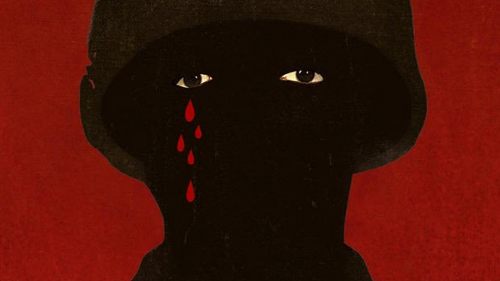SHE’S GOTTA HAVE IT Still Has It Thirty Years Later
It begins with an almost still image of a black-and-white New York City skyline. The clarinet trill of George Gershwin’s iconic “Rhapsody in Blue” enlivens the scene. Pretty soon, Isaac Mortimer Davis attempts to read from a book while a montage of Manhattan life plays parallel to his words. You’re familiar with this. It’s the opening scene to Woody Allen’s seminal film Manhattan. If you took that opening scene, stretched it out into multiple movies, and had all the awestruck joy, respect, and frustration that Allen carries for that film’s titular borough transplanted to Brooklyn, New York (replacing Gershwin with Bill Lee accordingly), you would end up with the filmography of Spike Lee.
Brooklyn hasn’t always been the glowing metropolis of white-hipsterdom it is known as today. In 1986, New York City was at the height of its crack epidemic. Yet in that same year, Spike Lee came out with a debut feature that was not afraid to present a black Brooklyn full of artists, professionals, and fun-loving bohemians as opposed to drug-dealers, troubled youths, and victims of an uncaring system. Apparently, the camera that followed Woody Allen and Diane Keaton in their Manhattan romance only needed to get lost a little ways downtown and cross a bridge to find some black people who were talking about the same things.
Like Creed, and modern TV sitcoms such as Blackish and The Carmichael Show, Spike Lee’s She’s Gotta Have It lets its characters carry a rare combination of agency and racial awareness. Blackness brings insight to the characters, but is not the defining aspect for many of them. Black people in the film are allowed to have their own quirks, needs, desires, strengths - as individuals, not as representatives of the entire race. Thanks to the depth, diversity, and specificity inherent to each character, it is easy to imagine Nola Darling’s love rectangle not only in terms of a Woody Allen-esque Manhattanite romp, but also as a story of a young Korean-American woman’s coming-of-age in Flushing, Queens, or a Puerto Rican woman’s self-discovery in the Bronx. But to say the film is just a race-swapped counterpart to Woody Allen’s early output is misleading, as She’s Gotta Have It is a Spike Lee film through and through.
As alluded to previously, the film is structured around Nola Darling’s continued adventures in a polyamorous lifestyle. Accompanying her are three suitors, who each in their own way disapprove of Nola’s polyamory. There is very little plot following this seemingly broad-for-an-’80s-movie premise, as the film is more an examination of Nola’s emotions than anything else. All three of Nola’s suitors reflect disparate aspects of the woman at the center. There’s Jamie Overstreet, a consummate romantic and the suitor most willing to take the feminine role in his relationship with Nola. Mars Blackmon, played by Lee himself, is a clown and apparent man-child who treats his relationship with Nola as casual as she treats it, yet sees no problem in giving her flak for wanting other partners in her life. Introduced last is Greer Childs, a vain social elite and all-purpose hotep with whom Nola is happy to act the submissive role, albeit in short bursts—sometimes just so she can ruffle the feathers of Greer’s ego. Nola navigates through all three relationships as she sees fit, gaining strength and sexual satisfaction from her diverse interactions with these men. By never committing singularly to any of them, she never has to submit to their desires.
The verve and bombast that Lee would display in his later Brooklyn-centric films is toned down here in favor of a more intimate and playful atmosphere. The characters have black title cards announcing their names and they introduce themselves by directly addressing the audience, creating the impression of both a loose documentary and a friendly confession. There is no dearth of playful touches; Greer Childs prolongs the beginning of his congress with Nola by compulsively folding all of his clothes as he disrobes. Mars won’t even take off his sneakers while he’s in bed. (The joke comes to a pay-off when his on-screen sexual climax is presented as Nola’s feet caressing his Jordans.) Early in the film, Nola lambasts the certain type of man she’s most contemptuous of, and the movie cuts to a series of pickup artists who each address the audience with their latest groaners.
The first of the film’s title cards is a quote from Zora Neale Hudson’s Their Eyes Were Watching God, a paragraph that contrasts the way men view women with the way independent women behave. She’s Gotta Have It is a film that seeks to undermine masculinity while empowering black sexuality, in stark contrast to the exploitation crime films that dominated black cinema a decade earlier. Never do any of the film’s numerous love scenes come off as gross, cute, funny, or small; and the sexuality of the characters—of even Nola’s lesbian friend Opal—are never questioned or doubted. The film’s conflict comes from the men trying to use Nola’s her sexuality to suit their own needs. Meanwhile, Nola occasionally ponders the possible selfishness of her own desires. Jamie, Mars, and Greer generally aren’t presented as aggressive, and they only become conventionally hyper-masculine when they make their entreaties to Nola for monogamous love. The suitors’ desires are never presented as “the right thing” by the film. Even the film’s much-maligned rape scene exists as a way to show the toxicity that’s inherent to the masculinity of even Jamie, who began as the story’s sweetest suitor.
By the end, Nola reclines under the same sheets she rose out of in the film’s opening, completely in control of her sexuality and aware of her desires. She shouldn’t be forced to choose one man, when it’s multitudes that keeps her satisfied. Her free-willed disposition does not preclude her from dreaming of a family of her own, or from having a prolific and politically-tinged artistic career. The film makes a point of including Nola’s father as a feint to explain Nola’s psychology. Her father is a musician, and happens to be played by the composer responsible for the film’s great score, Bill Lee, Spike’s real life father and once close collaborator. It’s not much of a stretch to say that Spike Lee himself identifies with Nola, and her rejection of falling into any single slot in life falls perfectly in-line with the prolific and varied filmography the director would go on to build for the following thirty years.



